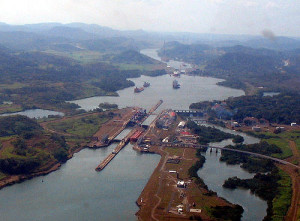The Panama Canal Expansion is a project that has been long awaited not just by Panama, but all the shipping related parties in the world. The expansion creates new alternatives for traffic in the Canal and provides two times the former capacity of the waterway. Before completion of the expansion project and opening on June 26, 2016, the locks could only handle vessels that carried up to 5,000 TEUs. Today the canal is able to receive Post-Panamax vessels, which can carry up to 14,000 TEUs. This opens up significant new opportunities for the shipping world.
The work on this project has been extensive. The Panama Canal expansion started in September 2007 with an estimated cost of $5.4 billion. This project to expand the 102 year old canal has taken almost 100 years, and more than 40,000 workers to make it possible. The Expansion involved the following set of components:
1. New Locks – the construction of two lock complexes, enabling a third lane of traffic
2. Pacific Access Channel (PAC4) – a 6.1 km –long cannel excavation for a canal for the new Pacific locks, bypassing the Miraflores Lake
3. Dredging of the navigational channels along the waterway
4. Water supply improvement – raising the maximum operational level of the Gatun Lake by 45 cm, to improve the water supply and draft of the Canal.
The Panama Canal Expansion has also influenced the economic activities of other countries. US ports as an example have been investing millions of dollars to upgrade their facilities, in order to be able to keep up with the expected increase of trade with the coming of the neo-Panamax ships. Ports in New York, New Jersey, South Carolina, Texas, and Georgia all reportedly have projects in the works.
The United States was in charge of the original canal construction completed in 1914, and was also responsible for the control of the waterway until 1999 when control of the canal was given back to Panama.
The Panama Canal expansion is based on research conducted over 6 years and involved around 100 studies on market demand, technical engineering aspects, economic feasibility, environmental impact, and other aspects. It has been a complex project, which was as well wracked by delays, engineering glitches, cost overruns, and labor strikes. Nevertheless, the expansion is expected to a notable growth driver for Panama’s economy and will have a major impact on global trade and supply chain management. Estimates by the Boston Consulting Group see as much as 10% of container traffic from East Asia and the US shifting from West Coast to East Coast ports by the year 2020.
